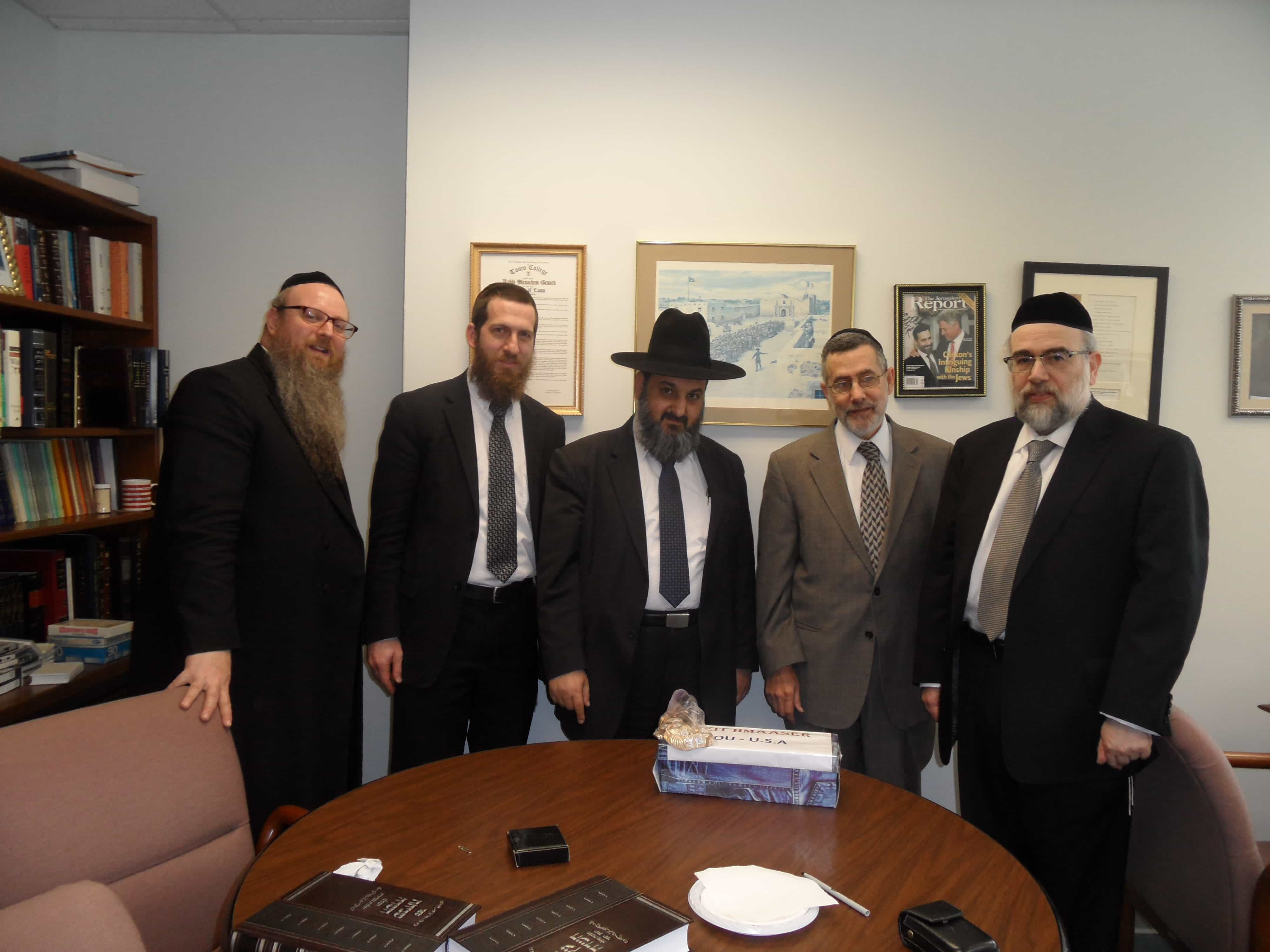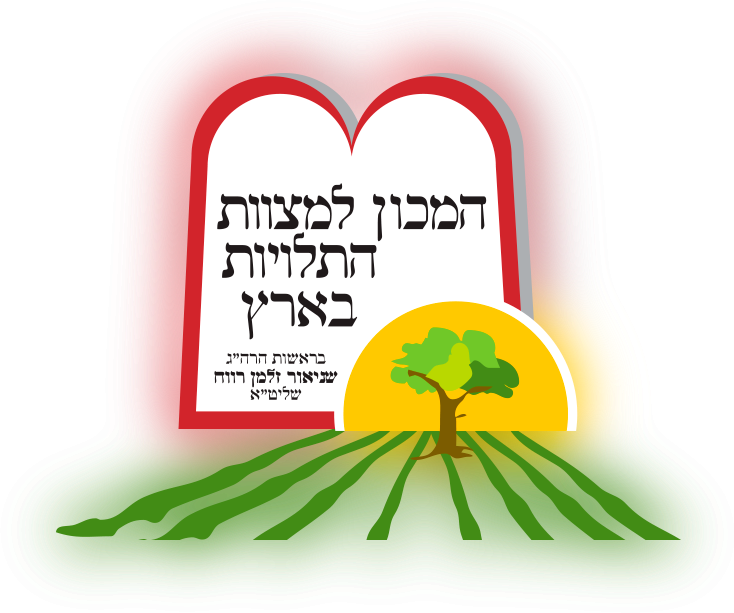
מחבר המאמר : Rabbi Shneur Zalman Revach
Explanation of a bet ma’aser
י"ז אייר התשע"ט | 22/05/2019
All produce (fruits, vegetables, and grains) grown in Eretz Yisroel during the first six years of the shemita cycle, require separation of Terumos and Ma’aseros. Until terumos and ma’aseros are taken, the produce is referred to as tevel, and may not be eaten. Teruma and ma’aser are not separated during the seventh year (shemita) from Jewish grown fruits, since they are hefker (ownerless). However, yevul nachri (produce grown on non-Jewish owned land which includes heter mechira) requires separation of teruma and ma’aser as will be noted. [Note: Rosh Hashanah 5776 (September 2015) began the first year of the shemita cycle.]
To transform biblically forbidden tevel into permissible produce there are four separations that are required. Even when one is uncertain if required separations have been made one is required to make the separations:
- Teruma gedola – this separation was intended to be given to the Kohein and consumed with ritual purity. Because today we are all tamei (ritually impure), the teruma portion is not eaten. It is separated and destroyed. The separation of any amount meets this obligation
- Ma’aser rishon is the 10% portion which is intended to be given to the Levi. For example, from 100 apples 10 apples are separated as ma’aser rishon. This portion is required to be separated each year. If there is a doubt as to whether it was already taken, it still must be separated, but it is not necessary to give the portion to the Levi. It may be kept for oneself and consumed.
- Terumas ma’aser – A 10% portion of the ma’aser rishon, equal to 1% of the total, is separated from each variety of produce.
- Ma’aser sheini or ma’aser ani is another 10% portion that is separated from the remaining produce (i.e. from original 100 apples 9 apples are separated):
- In years 1, 2, 4 and 5 of the shemita cycle ma’aser sheini is separated. When the Temple stood, this portion was eaten only in Jerusalem or redeemed. Today, we redeem this portion with coins worth a peruta (few pennies) and then it may be eaten. Even if there is a doubt as to whether ma’aser sheini was already taken, it still must be separated and redeemed.
- In years 3 and 6 of the shemita cycle as well as year seven produce grown on non-Jewish owned land, ma’aser ani is separated. This portion is intended to be given to the poor. If there is a doubt as to whether ma’aser ani was already taken, it still must be separated, but one is not required to give it to the poor. However, it is considered meritorious to give its value to charity.
Another Israeli produce restriction that is relevant to Israeli fruits is called revay. Revay refers to fruit that grow during the fourth year of the tree. These fruit are kodesh (holy). When the Temple stood, these fruit were eaten only in Jerusalem or redeemed. Today, we redeem these fruit with coins worth a peruta (few pennies) and then they may be eaten.
Halachos for separation of terumas and ma’aseros:
If one suspects that the produce might never have become wet, one should intentionally wet all the produce and touch them thereby making them tamei, before they separate the teruma. Otherwise the teruma might be tahor and may not be destroyed. It must be guarded until it rots. To avoid this dilemma, it is recommended that one ensure that the produce is already tamei.
From each variety of produce, one should separate an amount larger than 1%. For example, from 100 apples one should separate 1 apple plus a slice of apple. This portion should be placed right up against the box or bag that contains all the other produce.
Once one begins reciting the statement of separation, one should be careful not to move any of the produce until the statement is completed.
One only recites a blessing if they know for certain that teruma and ma’aser were not yet taken. In general, regarding Israeli produce sold in America, there are enough reasons to consider the level of obligation to be one of doubt and a blessing should not be recited.
One must understand the meaning of what they are saying when separating terumas and ma’aseros. If they do not understand the Hebrew version of the statement of separation, they should say the statement in English.
Statement of separation:
Blessing (only if one is certain that teruma was not taken, as when one has directly observed the harvest):
Hebrew text:
ברוך אתה ….. אשר קדשנו במצותיו וצונו להפריש תרומות ומעשרות:
יוֹתֵר מֵאֶחָד מִמֵּאָה שֶׁיֵּשׁ כָּאן הֲרֵי הוּא תְּרוּמָה גְּדוֹלָה בְּצַד צְפוֹנוֹ (אם מעשר כמה מינים יחד יאמר – כָּל מִין עַל מִינוֹ):
אוֹתוֹ אֶחָד מִמֵּאָה שֶׁיֵּשׁ כָּאן וְעוֹד תִּשְׁעָה חֲלָקִים כְּמוֹתוֹ בְּצַד צְפוֹנוֹ שֶׁל הַפֵּרוֹת (אם מעשר כמה מינים יחד יאמר – כָּל מִין עַל מִינוֹ) הֲרֵי הוּא מַעֲשֵֹר רִאשׁוֹן:
אוֹתוֹ אֶחָד מִמֵּאָה שֶׁעֲשִֹיתִיו מַעֲשֵֹר רִאשׁוֹן, עָשֹוּי תְּרוּמַת מַעֲשֵֹר (אם מעשר כמה מינים יחד יאמר – כָּל מִין עַל מִינוֹ:)
וּמַעֲשֵֹר עָנִי בְּצַד דְּרוֹמוֹ (אם מעשר כמה מינים יחד יאמר – כָּל מִין עַל מִינוֹ
וְאִם צָרִיךְ מַעֲשֵֹר שֵׁנִי יְהֵא מַעֲשֵֹר שֵׁנִי בִּדְרוֹמוֹ (אם מעשר כמה מינים יחד יאמר – כָּל מִין עַל מִינוֹ), וּמְחֻלָּל עַל פְּרוּטָה בַּמַּטְבֵּעַ שֶׁיִיחֵד הַמְמוּנֶה מטעם ה- OU על “בית המעשר” לְחִלּוּל מַעֲשֵֹר שֵׁנִי:
אִם הוּא רְבַעי יְהֵא מְחֻלָּל עַל פְּרוּטָה בַּמַּטְבֵּעַ שֶׁיִיחֵד הַמְמוּנֶה בְּהַOU לְחִלּוּל מַעֲשֵֹר שֵׁנִי וּרְבַעי:
שֶׁיִיחֵד הַמְמוּנֶה מטעם ה- OU על “בית המעשר”.
English Text:
The bottom of the produce that was placed on the side, an amount equal to 1% of all the total produce, should remain tevel. The amount which is in excess of the 1% should become teruma gedola on everything. That 1% that I said should remain tevel, together with the remaining amount that is required to become ma’aser rishon which is at the very top of the produce, I designate as ma’aser rishon. That 1% that was placed on the side that was designated ma’aser rishon, I now designate as terumas ma’aser on everything. If this produce requires separation of ma’aser sheini, then for the amount which is required to be ma’aser sheini, I designate the very bottom of the produce to be ma’aser sheini and I redeem this produce on a perutah worth of the coin that belongs to the OU that they permit me to use. If this produce requires separation of ma’aser ani, then for the amount which is required to be ma’aser ani, I designate the very bottom of the produce to be ma’aser ani. If any of the produce is reviy, those produce should be redeemed on a perutah worth of the coin that belongs to the OU that they permit me to use.
After completing the statement, the portion that was designated teruma and terumas ma’aser should be destroyed (discarded). All the rest of the produce may be eaten.


